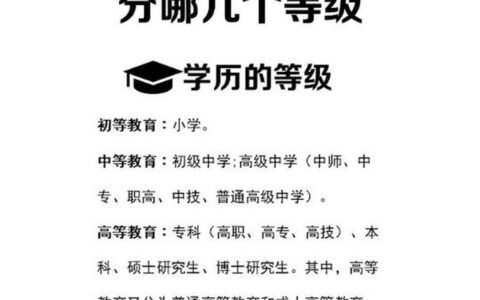初一英语语法知识点总结归纳
英语语法是英语学习内容里面最难学的部分,同时也是最重要的部分,想知道初一有哪些语法知识要学吗?下面是我为大家整理的关于初一英语必备语法知识点归纳,希望对您有所帮助。欢迎大家阅读参考学习!
初一英语语法知识总结
名词所有格
1.名词在句子中表示所有关系,所属关系常用名词所有格。两种形式:
(1)名词词尾加’s,主要用于有生命的名词 Tom’s mother the teacher’s desk
(2)of+名词,主要用于无生命的名词。the wall of the classroom
2.‘s属格的构成方法:
(1)单数名词在末尾加‘s the boy’s backpack the woman’s computer
(2)以s或es结尾的名词只在词尾加“‘”the boys’ backpacks my boss’ office
(3)复数名词后一般只加’不规则的复数名词加’s
the girls’ books the children’s soccers
(4)表示几个名词各自的所有关系时,名词末尾都加’
Tom’s and Jack’s books Lucy’s and Lily’s rooms
(5)表示几个名词共有的,应在最后一个词后加’s
Tom and Jack’s mother Lucy and Lily’s room
(6)表示时间、距离、重量、国家、城市等无生命的名词后也可以加’s表示其所有关系 an hour’s walk the city’s parks
(7)在表示店铺或教堂的名字或某人的家时,名词所有格的后面常常不出现它所修饰的名词。 my uncle’s(house) the doctor’s(office)
初一英语语法知识要点
句子成分:英语句子成分分为七种:主语、谓语、宾语、定语、状语、表语、宾语补足语。
1、主语是句子所要说的人或事物,回答是“谁”或者“什么”。通常用名词或代词担任。
如:I’m Miss Green.
2、谓语动词说明主语的动作或状态,回答“做(什么)”。主要由动词担任。
如:Jack cleans the room every day.
3、表语在系动词之后,说明主语的身份或特征,回答是“什么”或者“怎么样”。通常由名词、代词或形容词担任。如:My name is Ping Ping.
4、宾语表示及物动词的对象或结果,回答做的是“什么”。通常由名词或代词担任。
如:He can spell the word.
有些及物动词带有两个宾语,一个指物,一个指人。指物的叫直接宾语,指人的叫间接宾语。间接宾语一般放在直接宾语的前面。如:He wrote me a letter.
有时可把介词to或for加在间接宾语前构成短语,放在直接宾语后面,来强调间接宾语。
如:He wrote a letter to me.
5、定语修饰名词或代词,通常由形容词、代词、数词等担任。
如: Shanghai is a big city.
6、状语用来修饰动词、形容词、副词,通常由副词担任。
如:He works hard.(他工作努力。)
7、宾语补足语用来说明宾语怎么样或干什么,通常由形容词或动词充当
如:They usually keep their classroom clean
He often helps me do my lessons.
初一英语语法知识
there be句型
“there be+名词词组”中,there为虚词,be后面的名词词组为句子的真正主语。该句式在使用时需注意如下几点:
1、there be句式表示“有”时,它表示一种存在关系,通常带有一个地点状语,意为“什么地方(时候)有……”。此外,其主语还可以带前置或后置定语。
例如:There is a blackboard in the classroom.
There are two old women waiting for you at the gate.
2、在正式文体中,该句式中be动词的单复数形式取决于以下两种情况:(1)该句式中只有一个主语,主语为单数时,be动词用单数;主语若为复数,be动词也用复数。
(2)该句式中有几个并列主语,则按就近原则处理,即与靠近be动词的第一个主语保持一致。例如:
1) There is a pen on the desk.
2) There are three apples on the table.
3) There is a dictionary and two pens on the desk.
4) There are two pens and a dictionary on the desk.
3. there be句型与have的区别:
there be句型和have都表示“有”的含义。区别如下:there be表示“某处存在某物或某人”;have表示“某人拥有某物/某人”,它表示所有、拥有关系。
e.g.
① He has two sons.他有两个儿子。
② There are two men in the office.办公室里有两个男人。
相关文章:
1.初一英语期末必考12个语法知识点
2.七年级英语语法知识点整理
3.初一英语语法知识点大全
4.初一英语语法知识点总结归纳
5.英语初一上册的语法总结
初一英语知识点笔记整理
知识是取之不尽,用之不竭的。只有限度地挖掘它,才能体会到学习的乐趣。任何一门学科的知识都需要大量的记忆和练习来巩固。虽然辛苦,但也伴随着快乐!下面是我给大家整理的一些初一英语的知识点,希望对大家有所帮助。
人教版七年级上册英语知识点
1、Unit 1——Unit 2
1)问候语:
Good morning/ afternoon/ evening.
How are you?—Just OK, thank you. How are you?—Not bad, thanks.
Hi! Hello!
How do you do?
2)道别用语:
Nice/ Glad to meet/ see you.(meet用于初次见面,see用于熟人间)
Nice to meet/ see you, too.
Goodbye. Byebye. Bye. See you(later/ tomorrow/ next time)! So long! Good night!
3)介绍人或者物的句型:This is…
4)Excuse me.与I'm sorry.的区别:
Excuse me.是要引起对方的注意,而I'm sorry.则是向对方道歉。
5)词组be from= come from
in English
6)当问句中问到this/ that时,回答要用it;问到these/ those时,要用they来回答。例如: What's this in English?—-It's an eraser.
What are those?—-They are books.
7)对Thanks.的回答:That's OK./ You're welcome./ My pleasur.
8)look the same= have the same looks
give sth. to sb.= give sb. sth.
be like= look like
in the tree/ on the tree(树上结的、长出来的用on,否则用in)
in red(穿着红色的衣服)
in the desk(在空间范围之内)
in English(用英语)
help sb. do sth.
七年级下册英语知识点人教版2021
Unit 1 Can you play the guitar?
◆短语归纳
1. play chess下国际象棋
2. play the guitar弹吉他
3. speak English说英语
4. English club英语俱乐部
5. talk to跟…说
6. play the violin拉小提琴
7. play the piano弹钢琴
8. play the drums敲鼓
9. make friends结交朋友
10. do kung fu练(中国)功夫
11. tell stories讲故事
12. play games做游戏
13. on the weekend/on weekends在周末
◆用法集萃
1. play+棋类/球类下……棋,打……球
2. play the+西洋乐器弹/拉……乐器
3. be good at doing sth.= do well in doing sth.擅长做某事
4. be good with sb.和某人相处地好
5. need sb. to do sth.需要某人做某事
6. can+动词原形能/会做某事
7. a little+不可数名词一点儿……
8. join the…club加入…俱乐部
9. like to do sth.=love to do sth.喜欢/喜爱做某事
初中一年级英语上册知识点总结
Unit 1
词汇重点:
1. Good morning/ afternoon/ evening早上/下午/晚上好 Good night晚安(晚上告别)
2. glad/ nice to meet/ see you见到你很高兴(回答也一样)
3. welcome to+地点欢迎来到……(回答:Thank you或者Thanks)
4.let’s+ V(原)让我们做……
5. stand up起立 sit down坐下
6. this is—–这是……(用于介绍第三者的用语)
7. How do you do?你好(回答也是:How do you do?)
8. How are you?你好吗? Fine,thank you.and you?很好;谢谢;你呢?
I’m OK/ I’m fine, too.我也很好。
9.see you= see you later= see you soon= good-bye再见
10.excuse me打扰一下;请问
11.I’m—–= my name is—-我是……
12. be from= come from来自
13.in English用英语
14.Can you spell it? Yes/ No你能拼写它吗?能/不能
15.That’s OK/ That’s all right/ You’re welcome/ Not at all不用谢
16.…… years old……岁
17.telephone number电话号码 QQ number QQ号码 ID number身份证
18.the same(相同的)反义词是 different(不同的)
例: We are in the same grade, but we are in different classes.
初一英语知识点笔记相关文章:
★初一英语知识点总结笔记
★初一英语全册语法知识点汇总
★初一英语必备的知识点归纳
★初一英语必备知识点大总结
★初一必备的英语知识点归纳
★初一英语上册必备知识点归纳
★初一英语的主要知识点归纳
★初一英语知识点归纳
★初一英语必备语法知识点归纳
★初中英语重点知识笔记
初一英语语法大全汇总
以下是为大家整理的关于初一英语语法大全的文章,希望大家能够喜欢!初一的语法知识包括:
主要掌握几种时态 1,一般现在时 2,一般过去时 3,一般将来时 4,现在进行时还有几种词 1,名词 2,代词 3,形容词 4,动词 5,冠词
初一英语语法
一、词法
1、名词
A)、名词的数
我们知道名词可以分为可数名词和不可数名词,而不可数名词它没有复数形式,但可数名词却有单数和复数之分,复数的构成如下:
一)在后面加s。如:fathers, books, Americans, Germans, apples, bananas
二)x, sh, ch, s, tch后加es。如:boxes, glasses, dresses, watches, wishes, faxes
三)1)以辅音字母加y结尾的变y为i再加es如:baby-babies, family-families, duty-duties, comedy-comedies, documentary-documentaries, story-stories
2)以元音字母加y结尾的直接加s。如:day-days, boy-boys, toy-toys, key-keys, ways
四)以o结尾加s(外来词)。如:radios, photos,但如是辅音加o的加es:如: tomatoes西红柿, potatoes马铃薯
五)以f或fe结尾的变f为v再加es(s)。如:knife-knives, wife-wives, half-halves, shelf-shelves, leaf-leaves, yourself-yourselves
六)单复数相同(不变的)有:fish, sheep, deer鹿子, Chinese, Japanese
七)一般只有复数,没有单数的有:people, pants, shorts, shoes, glasses, gloves, clothes, socks
八)单词形式不变,既可以是单数也可以是复数的有:police警察局,警察, class班,同学, family家,家庭成员
九)合成的复数一般只加主要名词,多数为后一个单词。如:action movie-action movies, pen pal-pen pals;但如果是由man或woman所组成的合成词的复数则同时为复数。如:man doctor-men doctors, woman teacher-women teachers
十)有的单复数意思不同。如:fish鱼 fishes鱼的种类, paper纸 papers报纸,卷子,论文, work工作 works作品,工厂, glass玻璃 glasses玻璃杯,眼镜,orange桔子水 oranges橙子, light光线 lights灯, people人 peoples民族,time时间 times时代,次数, chicken鸡肉chickens小鸡
十一)单个字母的复数可以有两种形式直接加s或’s。如:Is(I’s), Ks(K’s)。但如是缩略词则只加s。如:IDs, VCDs, SARs
十二)特殊形式的有:child-children, man-men, woman-women, foot-feet, mouse-mice, policeman-policemen, Englishman-Englishmen
B)名词的格
当我们要表示某人的什么东西或人时,我们就要使用所有格形式。构成如下:
一)单数在后面加’s。如:brother’s, Mike’s, teacher’s
二)复数以s结尾的直接在s后加’,如果不是以s结尾的与单数一样处理。如:Teachers’ Day教师节, classmates’; Children’s Day六一节, Women’s Day三八节
三)由and并列的名词所有时,如果是共同所有同一人或物时,只加最后一个’s,但分别拥有时却分别按单数形式处理。如:Mike and Ben’s room迈克和本的房间(共住一间),Mike’s and Ben’s rooms迈克和本的房间(各自的房间)
2、代词
项目人称代词物主代词指示代词反身代词人称主格宾格形容词名词性第一人称单数 I me my mine myself复数 we us our ours ourselves第二人称单数 you you your yours yourself复数 you you your yours yourselves第三人称单数 she her her hers herself he him his his himself it it its its this that itself复数 they them their theirs these those themselves
3、动词
A)第三人称单数
当动词是第三人称单数时,动词应该像名词的单数变动词那样加s,如下:
一)一般在词后加s。如:comes, spells, waits, talks, sees, dances, trains
二)在x, sh, ch, s, tch后加es。如:watches, washes, wishes, finishes
三)1)以辅音字母加y结尾的变y为i再加es。如:study-studies, hurry-hurries, try-tries
2)以元音字母加y结尾的直接加s。如:plays, says, stays, enjoys, buys
四)以o结尾加es。如:does, goes
五)特殊的有:are-is, have-has
B)现在分词
当我们说某人正在做什么事时,动词要使用分词形式,不能用原形,构成如下:
一)一般在后加ing。如:spell-spelling, sing-singing, see-seeing, train-training, play-playing, hurry-hurrying, watch-watching, go-going, do-doing
二)以不发音e的结尾的去掉e再加ing。如:dance-dancing, wake-waking, take-taking, practice-practicing, write-writing, have-having
三)以重读闭音节结尾且一个元音字母+一个辅音字母(注意除开字母组合如show–showing, draw-drawing)要双写最后的辅音字母再加ing。如:put-putting, run-running, get-getting, let-letting, begin-beginning
四)以ie结尾的变ie为y再加ing。如:tie-tying系die-dying死lie-lying位于
4、形容词的级
我们在对两个或以上的人或物进行对比时,则要使用比较或级形式。构成如下:
一)一般在词后加er或est(如果是以e结尾则直接加r或st)。如:greater-greatest, shorter–shortest, taller–tallest, longer–longest, nicer- nicest, larger-largest
二)以重读闭音节结尾且1个元音字母+1个辅音字母(字母组合除外,如few-fewer fewest)结尾的双写结尾的辅音再加er/est。如:big-bigger biggest, red-redder reddest, hot-hotter hottest
三)以辅音字母+y结尾的变y为i加er/est。如:happy-happier happiest, sorry-sorrier sorriest, friendly-friendlier friendliest(more friendly most friendly), busy-busier busiest, easy-easier easiest
四)特殊情况:(两好多坏,一少老远)
good/well- better best many/much- more most bad/ill– worse worst
little- less least old- older/elder oldest/eldest far- farther/further farthest/furthest
5、数词(基变序,有规则;一、二、三,自己背;五、八、九、十二;其它后接th;y结尾,变为i, eth跟上去。) first, second, third; fifth, eighth, ninth, twelfth; seventh, tenth, thirteenth, hundredth; twenty-twentieth, forty-fortieth, ninety-ninetieth
二、句式
1.陈述句
肯定陈述句 a) This is a book.(be动词)
b) He looks very young.(连系动词)
c) I want a sweat like this.(实义动词)
d) I can bring some things to school.(情态动词)
e) There’s a computer on my desk.(There be结构)
否定陈述句 a) These aren’t their books. b) They don’t look nice.
c) Kate doesn’t go to No. 4 Middle School. d) Kate can’t find her doll.
e) There isn’t a cat here.(=There’s no cat here.)
2.祈使句
肯定祈使句 a) Please go and ask the man. b) Let’s learn English!
c) Come in, please.
否定祈使句a) Don’t be late. b) Don’t hurry.
3.疑问句
1)一般疑问句 a) Is Jim a student?b) Can I help you? c) Does she like salad?
d) Do they watch TV? e) Is she reading?
肯定回答: a) Yes, he is. b) Yes, you can. c) Yes, she does. d) Yes, they do. e) Yes, she is.
否定回答: a) No, he isn’t. b) No, you can’t. c) No, she doesn’t. d) No, they don’t. e) No, she isn’t.
2)选择疑问句 Is the table big or small?回答 It’s big./ It’s small.
3)特殊疑问句
①问年龄 How old is Lucy? She is twelve.
②问种类What kind of movies do you like? I like action movies and comedies.
③问身体状况 How is your uncle? He is well/fine.
④问方式 How do/can you spell it? L-double O-K.
How do we contact you? My e-mail address is cindyjones@163.com.
⑤问原因Why do you want to join the club?
⑥问时间 What’s the time?(=What time is it?) It’s a quarter to ten a.m..
What time do you usually get up, Rick? At five o’clock.
When do you want to go? Let’s go at 7:00.
⑦问地方 Where’s my backpack? It’s under the table.
⑧问颜色 What color are they? They are light blue.
What’s your favourite color? It’s black.
⑨问人物 Who’s that? It’s my sister.
Who is the boy in blue? My brother.
Who isn’t at school? Peter and Emma.
Who are Lisa and Tim talking to?
⑩问东西 What’s this/that(in English)? It’s a pencil case.
What else can you see in the picture? I can see some broccoli, strawberries and hamburgers.
11问姓名 What’s your aunt’s name? Her name is Helen./She’s Helen.
What’s your first name? My first name’s Ben.
What’s your family name? My family name’s Smith.
12问哪一个 Which do you like? I like one in the box.
13问字母What letter is it? It’s big D/small f.
14问价格How much are these pants? They’re 15 dollars.
15问电话号码 What’s your phone number? It’s 576-8349.
16问谓语(动作) What’s he doing? He’s watching TV.
17问职业(身份) What do you do? I’m a teacher.
What’s your father? He’s a doctor.
三、时态
1、一般现在时表示普遍、经常性的或长期性的动作时使用一般现在时,它有:
Be动词:She’s a worker. Is she a worker? She isn’t a worker.
情态动词:I can play the piano. Can you play the piano? I can’t play the piano.
行为动词:They want to eat some tomatoes. Do they want to eat any tomatoes? They don’t want to eat any tomatoes.
Gina has a nice watch. Does Gina have a nice watch? Gina doesn’t have a watch.
2、现在进行时表示动词在此时正在发生或进行就使用进行时态,结构为sb be v-ing sth+其它.
I’m playing baseball. Are you playing baseball? I’m not playing baseball.
Nancy is writing a letter. Is Nancy writing a letter? Nancy isn’t writing a letter.
They’re listening to the pop music. Are they listening the pop music? They aren’t listening to the pop music.
七年级英语语法归纳表
1、目前所学的动词的形式有4种:
①动词原形;如:do;have;like
②动词的单三式(常在动词原形后加s);如:get-gets
③动词不定式(to+动词原形);如:meet-to meet
④动词ing式(动词原形后加ing)如:look-looking
2、表示征求意见或建议邀请的礼貌用语
Would you like+to+动词原形?(你想要……吗?)
How about+动词ing?(……怎么样?……好不好?)
What about+动词ing?(……怎么样?……好不好?)
Why not+动词原形?(为什么不……呢?)
Why don’t you+动词原形?(你为什么不……呢?)
Let’s+动词原形.(让我们……吧。)
表示同意、答应:
①Yes,I’d like to./Oh,I’d love to.
②All right/OK.
③Great!④Sure.
⑤Good idea!
⑥Thanks.I’ll be glad to
⑦Thanks.That would be very nice.
⑧I’d like that.
表示不同意、拒绝:
①No,thanks.
②Sorry,I can’t.
③I’d like to.But I’m afraid I can’t/I have no time.
3、目前学过的情态动词有can, may,could,would和will等五个。
学好情态动词必须把握三个用法:
①后必须跟动词原形;
②没有三单式(其后不能加s);
③可以把情态动词提到句首构成疑问句;
可以在情态动词后面加上not构成否定句。
4、目前学过的后跟动词不定式(to+动词原形)的有:
①would like to+动词原形(想要做某事);
want to+动词原形(想要做某事);
②forget to+动词原形(忘记要做某事);
③like to+动词原形(喜欢做某事);
love to+动词原形(喜欢做某事)
④ask sb. to+动词原形.(请/叫某人做某事)
tell sb. to+动词原形.(告诉/叫某人做某事)
would like sb. to+动词原形.(想叫某人做某事)
want sb. to+动词原形.(想叫某人做某事)
⑤have to+动词原形(必须/不得不做某事)
⑥Nice/Glad/happy to+动词原形(很高兴做某事)
如:Nice to meet you.
I’m glad to be here.
5、目前学过的后跟动词原形的有:
①情态动词:can,may,could,would,will后;
②助动词do,don’t,does,doesn’t后(does,doesn’t一出现,三单式要滚蛋);
③动词please(请)后:如:Please tell him about the picnic.
④短语Why not…/Why don’t you…后;
⑤动词let后;如:Let Jane help you. Let’s go home.
⑥动词help后,也可带to;如:Let’s help Maria(to) carry water.
⑦祈使句以动词原形开头,如:Have a seat, please.请坐下。
6、目前学过的后跟动词ing的有:
①Be动词后的动词;
如:Are you kidding? I’m just looking. This is Michael speaking.
②所有的介词后;已学过的介词有:at,for,about,in,on,from,of,to,with,after等。
如:What about+动词ing?—Whatabout flying a kite with me?
How about+动词ing?—How about going fishing this Sunday?
It’s time for going home=It’s time to go home.
Thank you for helping me=Thank you for your help..
③go+动词ing——go fishing去钓鱼; go shopping去购物
④do some shopping购物
⑤like/love+动词ing(喜欢做某事)
7、有单复数变化的词
①名词
(1)名词单数变复数的方法
1)大部分在词尾加s.如:dog—dogs
2)以-s,-x,-ch,-sh结尾的加es.如:
class—classes bus—buses glass—glasses
box—boxes watch—watches(手表) fish—fishes
3)以“辅音字母+ y”结尾的,变y为i,加es.
baby—babies(婴儿) family—families(家庭)
study—studies(书房) fly—flies(蝇子)
注意:boy—boys play—plays toy—toys way—ways monkey—monkeys
4)以 f, fe结尾的,变f, fe为v,加es.
half—halves(一半)knife—knives(小刀)
yourself(你自己)—yourselves(你们自己)
(2)特殊变化的词
1) a变e: man—men(男子) woman—women(女子)
snowman—snowmen(雪人)
Englishman— Englishmen(英国人)
Englishwoman—Englishwomen(英国妇女)
2) o变e:foot—feet(脚) tooth—teeth(牙齿)
3)单复数同形:Chinese—Chinese(中国人)
fish—fish(鱼) yuan—yuan(人民币元)
4) mouse—mice(老鼠) child—children(儿童)
5)合成词中一般变后面的词:apple tree—apple trees(苹果树)
但下列需前后都变:
man teacher—men teachers(男教师)
woman doctor—women doctors(女医生)
6)集体名词,以单数形式出现,但实为复数。例如:people(人们)police(警察们)本身就是复数,family指“全家人”时,本身也是复数,它们都不能加s.如:The Chinese people are very kind.中国人民都很友好。
Kangkang’s family are all tall and thin.康康全家人都又高又瘦。
②be动词:单数am, is;复数are
③行为动词:复数:动词原形
单数:在行为动词后加s或es(即动词的三单式)。如:
Maria likes milk.(likes是三单式,为单数)
Maria and Jane like milk.(like是动词原形,为复数)
④指示代词单数:this这个 that那个
复数:these这些 those那些
8.名词+’s所有格
单数名词后直接加“’s”:
Jim’s coat吉姆的外套 Jeff’s mother杰夫的妈妈
以s结尾的复数名词,只加“’”
Teachers’ Day教师节 the twins’ books双胞胎的书
不以s结尾的不规则的名词复数,加“’s”
Children’s Day儿童节 men’s shoes男式鞋
表示两者共同拥有时,只在最后一个名词后加’s
Lucy and Lily’s mother露茜和莉莉的妈妈(共同的妈妈,一个妈妈)
表示两者各自拥有时,要在每个名词后加’s
Lucy’s and Kate’s rooms露茜和凯特的房间(各自的房间,两间房子)
9.三单问题
①总则:主语是第三人称单数时,动词(谓语)要用三单式。如:
He gets up at six。由于主语He是第三人称单数,动词get后要s,即gets是三单式。
②可以作第三人称单数主语(三单主语)的有:(1)he, she,it;(2)单个的人;单个的物。
③动词三单式的构成
(1)特殊的:be—is have—has
(2)有规律的:
1)大部分在词尾加s;如: get—gets take–takes need-needs know—knows
2)以s, x,ch, sh,o结尾的加es;如:
guess—guesses(猜) watch–watches(看) teach―teaches(教) fish-fishes(钓鱼) go-goes(去) do-does
3)以“辅音字母+y”结尾的,变y为i,加es.如:
study→studies(学习) fly→flies(飞,放)
carry→carries(提) worry—worries(担心)
注意:buy-buys say-says play-plays
10.冠词的用法
<1>a/an不定冠词,表示“一个…”,放在单数名词前,指不确定的某一个;
<2> a用在元音前(不是元音字母);an用在辅音前(不是辅音字母)。如:(1) an English boy,an apple,an orange, an egg, an eraser, an old monkey,
(2) an hour一个小时 half an hour半小时(hour中h不发音)
(3) a“ d”(一个d), an“i”, an“f”, an“x”, a“u”.
<3>the定冠词,表示“这,那,这些,那些”,放在名词前,表示特指。
11.数词
(一)、基数词
注意 eleven, twelve, thirteen, fourteen, eighteen, twenty, thirty, forty, fifty, one hundred/thousand等词的拼写。具体用法如:
Lesson Twelve, Class Two, Grade Eight, The No. 45 bus, Channel Five, Room 302, the No.2 middle School, a five-year-old daughter
注意
1、“前有,后无;前无,后有”即 two hundred books, hundreds of books
2、如 eight-year-old的词后面要加名词
3、“在某人几十岁时”用 in one’s+整十的复数如:in her fifties, in their thirties
4、表示“多高、多宽、多长、多深,年龄少大、距离多远”时,用“数量+单位+形容词”
如:two months old, twenty meters deep
(二)、序数词
注意 first, second, third, fifth, eighth, ninth, twelfth, twentieth, twenty-first, ninety-ninth, one hundredth等词的拼写。具体用法如:the Twelfth lesson, June 5th, the Second World War, on his twentieth birthday.
(三)、分数,小数和百分比:
分数的表达:分子用基数词,分母用序数词;分子大于一,分母加 s,分子和分母之间一般用连字号。如3/5读作three-fifths, 1/3读作one-third
0.78读作zero point seven eight 7.45读作 seven point four five
45%读作 Forty-five percent 67%读作sixty-seven percent
注意:分数表示1/2,可以用a/one half表示;分数1/4,3/4也可以用quarter表示。如:
1/4读作one-fourth or a quarter, 3/4读作three-fourths or three quarters
Half of the students live in the school on weekdays.(习惯上省略a)
One- third of the students are on the playground.
Three-fourths of the earth is covered with water.
(四)、时间和钟点
7:15读作seven fifteen/ a quarter past seven
7:30读作seven thirty/half past seven
7:35读作seven thirty-five/ twenty-five(minutes)to eight
8:03读作 three minutes past eight
注意:如果分钟不是5的倍数,minute不能省略。
(五)、日期和年份
on March 8读作 on march the eighth on 8th of March读作 on the eighth of March
in 1998读作 nineteen ninety-five, in 2008读作 in two thousand and eight
12.介词
一、介词一般位于名词或代词之前,在句中不单独做任何成分。介词本身有独立的含义,但意义不够完整,在句中使用时,后面必须接有宾语构成介词短语后,才能表达完整的意义。介词短语在句中常作状语、定语、表语或宾语补足语。
二、介词的用法:
(一)表示时间的介词的用法: 1。at, on, in
(1)at在句中用在钟点之前。意为“在„„点钟”如:at six在6点
(2)at用在固定短语中。如: at noon在中午;at this time of year一年这个时候
(3)on常用于表示具体的哪一天或某天的上午、下午及晚上或用于固定短语中。
如:on the morning of June在6月5日的早上; on a cold winter night在一个寒冷的冬天的夜里;on May 20th在5月20日
(4)on用在星期前。如: on Sunday在星期日
(5)in用于年、月前面,季节、世纪前以及固定短语中。
如: in 2008在2008年; in October在10月; in spring在春天; in the twentieth century在二十世纪; in his twenties在他二十多岁时; in the morning/ afternoon/ evening在早上/下午/晚上
2.before,after,in
① in是以现在为起点,表示将来一段时间以后,常用于一般将来时态中。 eg: I will come back in three days.我三天以后回来。
②after是以过去为起点,表示过去一段时间以后,常用于过去时态中。 eg:She went after three days.她三天以后走的。
③before表示“某时刻或某时间之前”时态根据句子而定。 E.g: Check your papers carefully before you hand them in,
(二)表示地点方位介词的用法:
1.at, in at后跟小地方,in后跟大地点
2.in, on, to
in表示在某一范围内的某方位。
on表示与某地相邻关系。
to表示在某一地区之外的某方位,不属于该范围。
Shanghai lies in the east of China.
Shandong lies on the east of Hebei.
China lies to the west of Japan.
(三)表示手段方式的介词的用法: in, by, with, on表示“用”
(1)by主要指利用交通工具。即:“by+名词原形”或“行为手段by+v-ing形式”。如:I go to school by bike every day. He learns English by listening to cassettes.
(2)in主要指"用某种语言"或"用工具、材料"以及方式( way)等。
如:People say it in English. I often write in ink/ pencil. He can say it in a different way.
(3)on主要表示行走或站立时所用的身体部位,或利用交通工具。
即:“on+冠词/形容词性物主代词+交通工具名词”或接表示媒体的名词。
此时相当于over。如: People walk on foot. But some people can walk on hand. He often goes to school on a bus.
注意:“on/ in+冠词/形容词性物主代词+交通工具名词”这种交通方式的表达可以转换成“ by+交通工具名称”。例:on a bike= by bike如果交通工具名词为car,习惯上用in,其他多用on。如: He learns English on TV.
(4)with主要指某一具体的劳动工具、材料或用身体部位。
如:They like writing with a brush.他们愿意用毛笔写字. We see with our eyes and hear with our ears.我们用眼睛看,用耳朵听.
13.祈使句
一、用于表达命令、请求、劝告、警告、禁止等的句子叫做祈使句,祈使句最常用于表达命令,因此在学校文法中也常称为命令句。
祈使句因对象(即主语)是第二人称,所以通常都省略。祈使句的动词都为一般现在时,句末则使用句号来表示结束。
用客气的语气表示祈使句时,可在句首或句尾加上please,但如果在句尾加please,那在please之前一定要加一个逗号“,”。
二、表现形式
●肯定结构:
1. Do型(即:动词原形(+宾语)+其它成分)。如:Please have a seat here.请这边坐。
有的祈使句在意思明确的情况下,动词可省略。如:This way, please.= Go this way, please.请这边走。
2. Be型(即:Be+表语(名词或形容词)+其它成分)。如:Be a good boy!要做一个好孩子!
Be quite.安静 Be careful!小心!
3. Let型(即:Let+宾语+动词原形+其它成分)。如:Let me help you.让我来帮你。
●否定结构:
1. Do型和Be型的否定式都是在句首加don’t构成。如:Don’t forget me!不要忘记我! Don’t be late for school!上学不要迟到!
2. Let型的否定式有两种:“Don’t+ let+宾语+动词原形+其它成分”和“Let+宾语+ not+动词原形+其它成分”。如:Don’t let him go./ Let him not go.别让他走。
3.有些可用no开头,用来表示禁止性的祈使句。如:No smoking!禁止吸烟!No fishing!禁止钓鱼!
本图文由用户发布,该文仅代表作者本人观点,本站仅提供信息存储空间服务。如发现本站有涉嫌抄袭侵权/违法违规的内容,联系本站举报。转发注明出处:https://www.xsy-edu.com/n/73797.html




